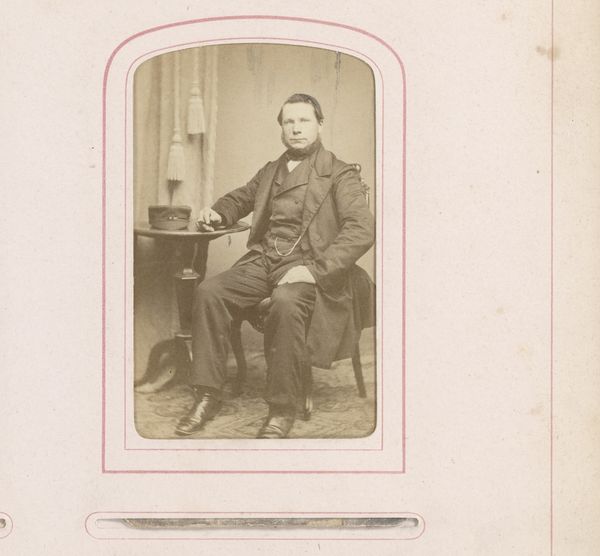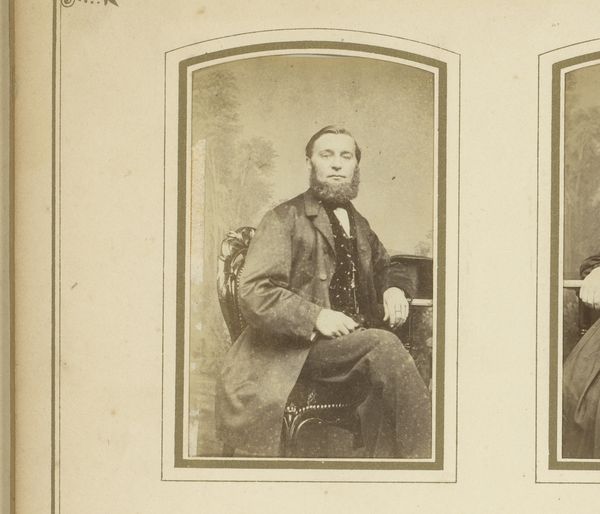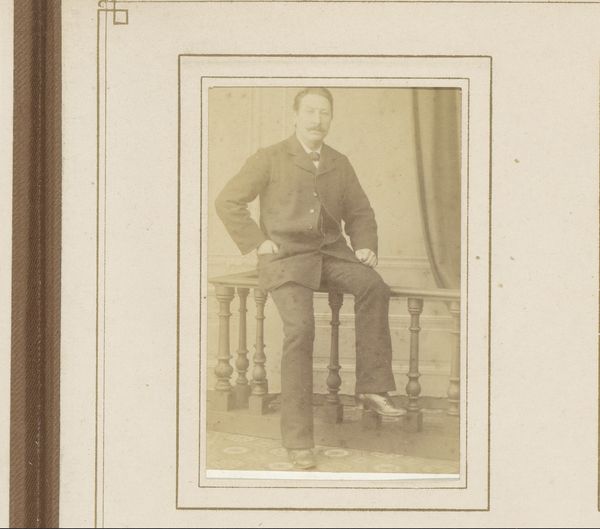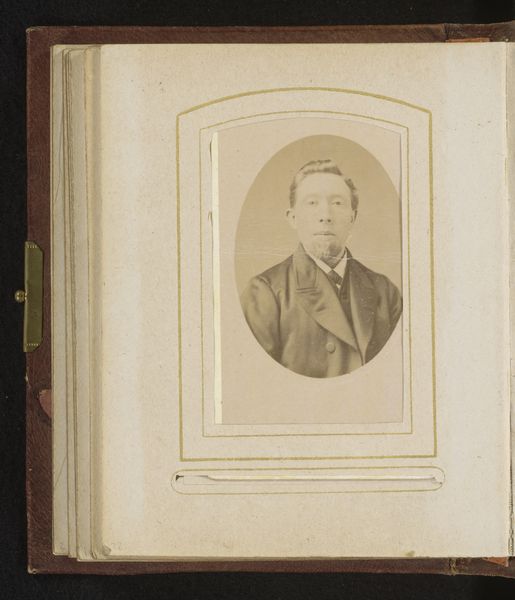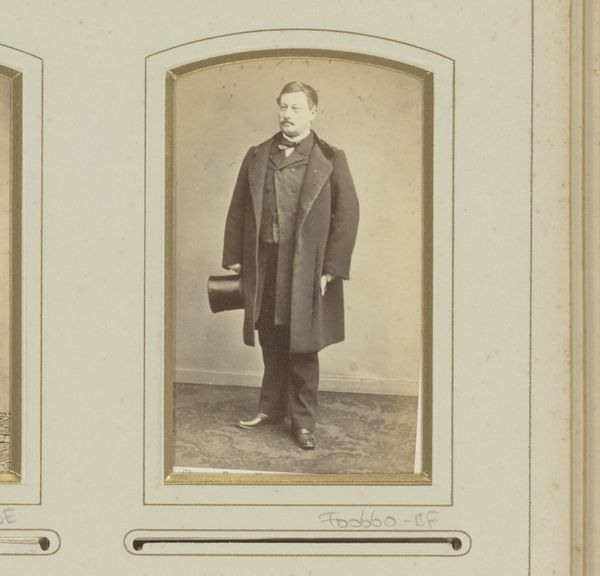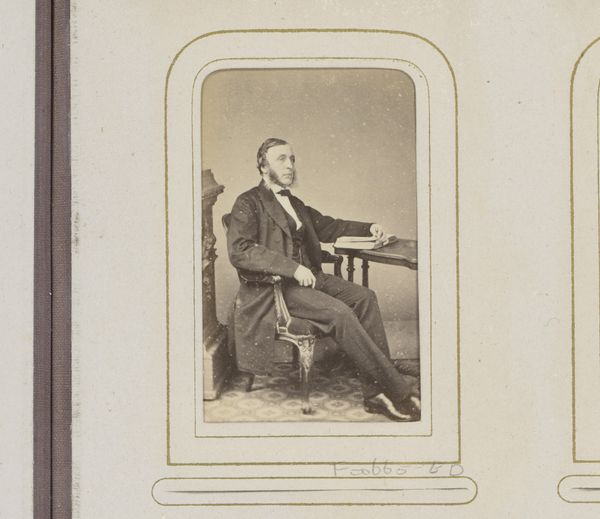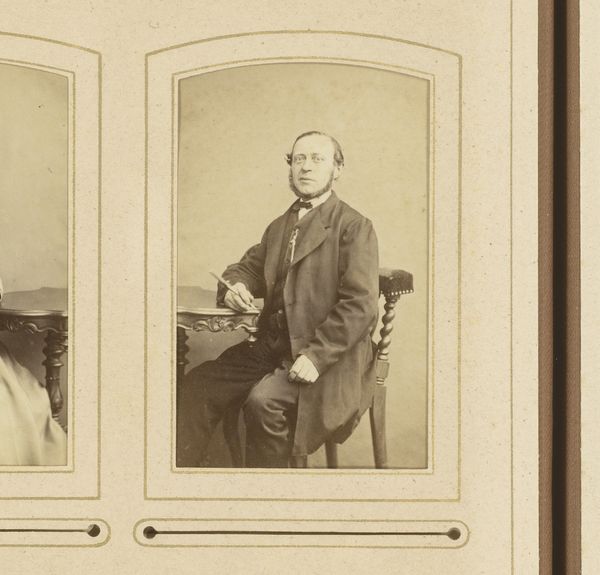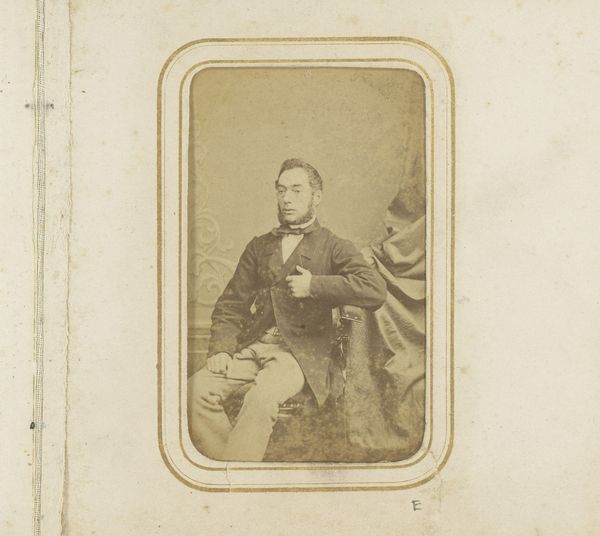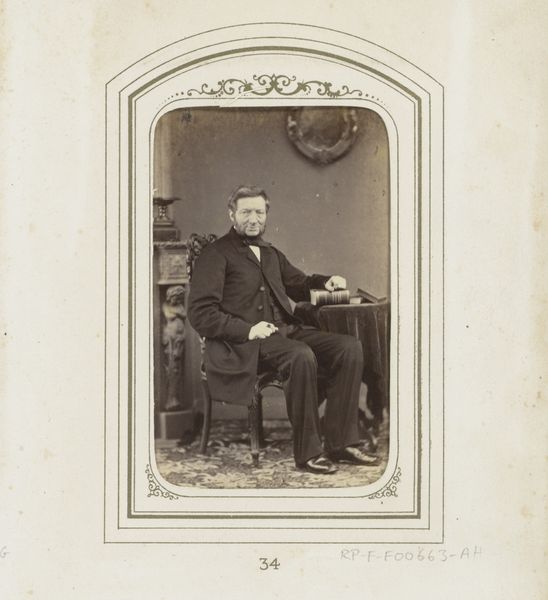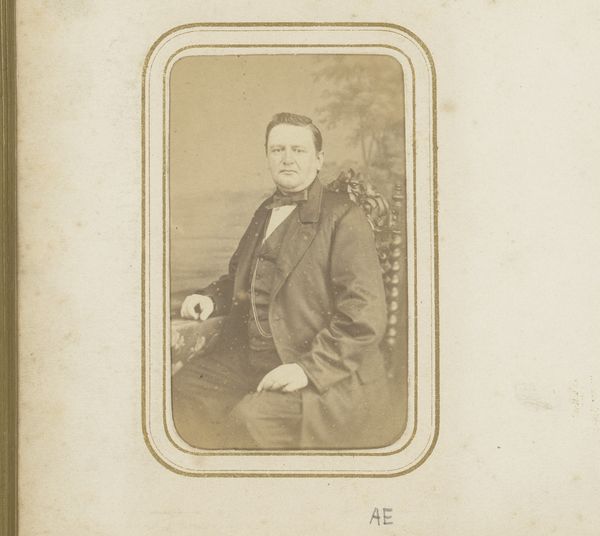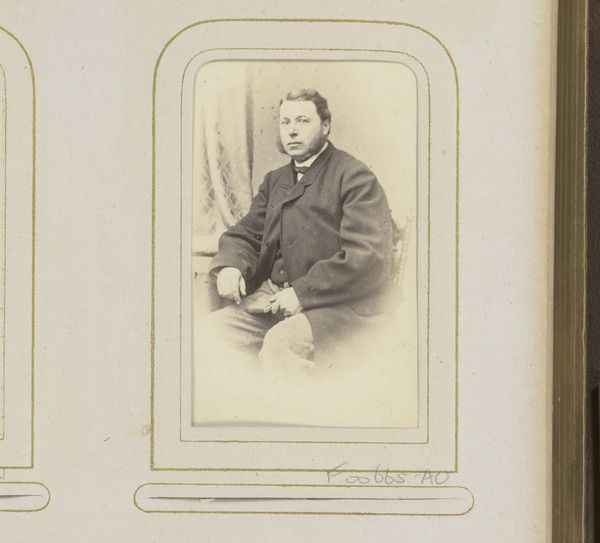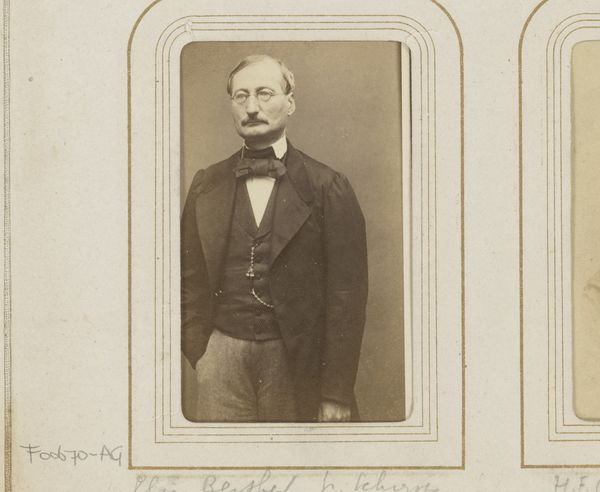
daguerreotype, photography
#
portrait
#
daguerreotype
#
photography
#
historical photography
#
19th century
#
realism
Dimensions: height 82 mm, width 50 mm
Copyright: Rijks Museum: Open Domain
Curator: Here we have a fascinating portrait, identified as “Portret van een man”, created sometime between 1861 and 1874. It’s held here at the Rijksmuseum and is attributed to Albert Greiner. The photographic medium used is a daguerreotype. Editor: It's remarkable how much presence this fellow has, even through this aged, sepia-toned image. Look at that steely gaze! It feels quite austere and composed, and you can almost feel the weight of the process, the way sitting for one of these back then must have felt. Curator: Indeed. Daguerreotypes were significant technological breakthroughs, especially during the rise of photography's influence. This portrait allows us to think about 19th-century photography, about how public imagery shifted with this rise. The image's subject certainly looks to be from the bourgeoisie or aristocracy. He's a very clear depiction of that historical socio-economic echelon. Editor: Yes, the formality is very clear from his suit. A very stiff fabric by the looks of it. It appears heavy, very meticulously woven and tailored—obviously someone accustomed to those material comforts, but who is he, and what are the work processes to achieve a fit like this in the period this was made? What processes went into the actual photography? The way they captured a sense of light is still wonderful today. It does capture reality—if an artificial or very staged one—with incredible immediacy. Curator: The clothing really indicates much of his context and values, while the way that daguerreotypes captured light allowed subjects to project their personal agency into the image. Photography shifted the field of portraiture itself, which up until then had been more tied to artistic interpretation and brushstrokes on canvas. Suddenly a new sense of accessible realism was readily attainable, altering many fields along with it. Editor: It also alters the artistic intention as we have understood painting and portraiture so far, for me, focusing our vision not so much on individual expression, but instead on the impact on making something more people-oriented in some senses, capturing their own image, rather than solely relying on an artist to mediate how the world perceives someone. Curator: Yes, this photograph shows us not only a single, austere man but it highlights an important shift in artistic paradigms. Thanks to the rise of technological advancements in image production we see socio-historical factors impacting how artwork started to take shape in ways not seen before! Editor: Absolutely. The textures, the material, and the societal access become inseparable from the man himself in this historical document.
Comments
No comments
Be the first to comment and join the conversation on the ultimate creative platform.
